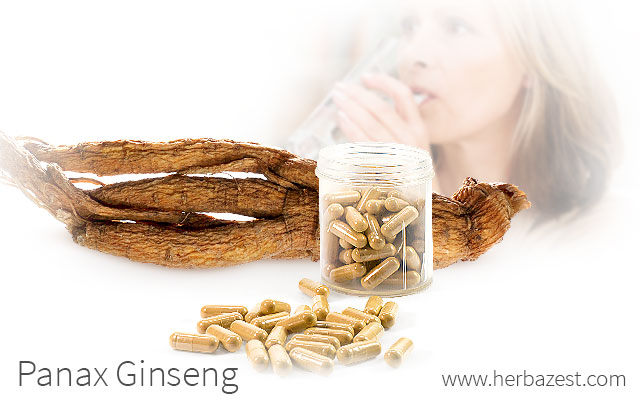Also known as Chinese, Korean, or Asian ginseng, Panax ginseng is undoubtedly the most popular species of the Panax genus, recognized by its arrangement of leaves in a circle around a straight stem, with yellowish flowers and red berries that grow in the center. The most easily identifiable part of Chinese ginseng is its rhizome, popularly known as the “root,” which closely resembles the human body with a set of two “arms” and two “legs.”
Other Species of Panax
The Asian side of the Panax genus includes other related ginseng species, namely Japanese ginseng (Panax japonicus) and Himalayan ginseng (Panax pseudoginseng), among local and less known subspecies with similar properties.
On the North American side of the Panax genus is Panax quinquefolius, better known as American or wild ginseng, which has many similar benefits and some differences.
Asian ginseng is considered as warm and stimulating, while American ginseng is catalogued as cooler and less stimulating.
Cultivars of Panax ginseng
Korean or Asian ginseng has many varieties depending on where and how it is grown. However, they can be distinguished primarily by their shape:
Round rhizome ginseng is named after its short and thick shape, accompanied by shorter main roots with many side branches. This variety grows quickly, producing seeds in the third year. The two cultivars of round rhizome are 'medium round rhizome' and 'big round rhizome'. 'Big round rhizome' is the most popular among Korean farmers due to its vigorous growth pattern.
Long rhizome ginseng is lengthy and thin, with short yellow main roots. Its seeds do not appear until the fourth year, but the root shape of long rhizome is considered highly desirable. Cultivars of long rhizome are 'round shoulder' and 'long neck'.
Health Benefits of Korean Ginseng
Extensive studies have been done to understand the full potential of this herb and have shown Korean or Panax ginseng health benefits, which include helping with high blood pressure, diabetes, menopause symptoms, erectile dysfunction, and more.
Korean ginseng is widely used as an enhancing or preventative herb. Studies also support its use in improving memory, increasing alertness, stimulating immunity, and providing anti-aging benefits.
Panax Ginseng Preparations
Asian ginseng root can be ground into powder form and added to meals or enclosed in ginseng capsules. In order to avoid ginseng's strong taste, capsules and tablets are convenient ways to reap the benefits of Panax ginseng with a fixed, easy-to-monitor dosage. Infusing ginseng into drinks is very popular for increasing alertness and improving mental performance, with recipes ranging from soothing teas to energy drinks.
Economic Importance of Panax ginseng
First discovered over 7,000 years ago, Panax ginseng is now distributed to 35 countries worldwide to be used in agricultural products, food, supplements, and medicines. Extremely valuable as an essential trades good for healthcare in Asia, the world market for Panax ginseng is estimated to be over $2 million USD.
Where to Buy Panax Ginseng
Panax ginseng supplements are readily available at pharmacies, health food stores, supermarkets, and online retailers. When buying ginseng products, make sure the label says “Panax,” “Asian,” or “Korean” ginseng, and not “American” or wild ginseng, which is similar but offers distinct benefits. Even though Korean white ginseng may be less expensive for a bigger amount, Korean red ginseng and black ginseng preparations are considered to be stronger forms of Panax ginseng.
Panax ginseng has been trusted for thousands of years as a medicinal herb beneficial to overall human health. With a variety of species available, be sure to identify the right Asian ginseng for the right treatment.
Sources
- HortTechnology, Asian and American Ginseng – A Review, 1995
- Journal of Ginseng Research, Chemical Diversity of Panax ginseng, Panax quinquifolium, and Panax notoginseng, 2012 | The world ginseng market and the ginseng (Korea), 2013
- University of Maryland Medical Center, Asian ginseng




